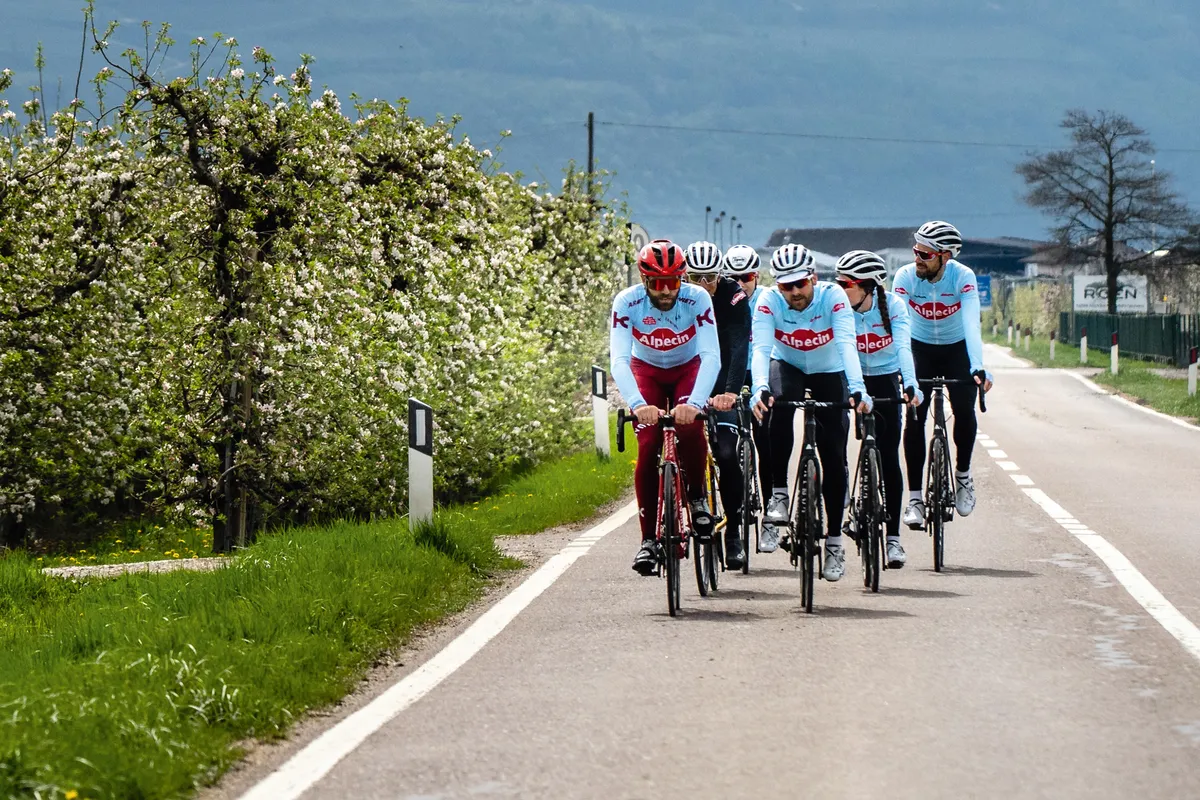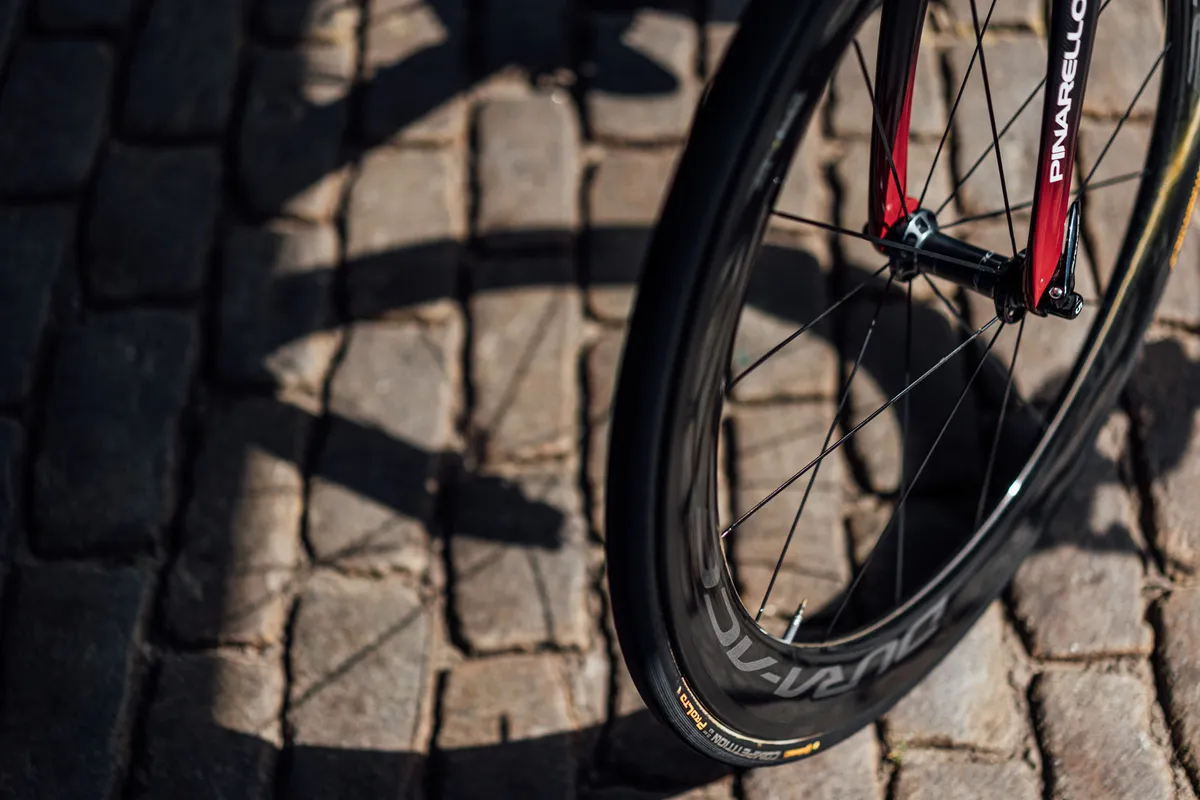Riding into a headwind can be a demoralising experience – it can feel like riding uphill when blustery conditions strike – but there are ways to minimise the effects of cycling in the wind or, indeed, make the most of it.
Here are 10 tips to help you handle headwinds.
Got your own advice for cycling in the wind? Let us know in the comments below.
- Best cycling apps | 16 of the best iPhone and Android apps to download
- Why it’s faster to ride hard into a headwind than with a tailwind
1. Work with the wind
“If the headwind occurs during a training ride on a long flat stretch, riders should increase their cadence to keep the pace high,” says former professional cyclist and founder of the Le Col cycle clothing brand, Yanto Barker.
Doing this means the headwind won’t stop you in your tracks when it hits and will help keep your legs fresh.

2. Ride in a group
Riding in a group is a sure-fire way to reduce the effort required to overcome air resistance – you can reduce drag by around 30 per cent when drafting – and that's even more the case when cycling in the wind.
“If you’re part of a group, take short turns to lead,” says Barker. “Keep rotating positions because staying too long at the front will quickly become tiring.”
3. Get aero
If you're not riding in a group, or it's your turn on the front of the bunch, getting aero will help you punch through the wind.
“Where possible ride on the drops, get your back flat and tuck in low to the bar,” says Barker.

4. Plan your ride
Check the forecast before you ride and plan accordingly. If the wind is due to drop and you have the option to delay your ride, brew another coffee and head out later in the day.
Choose a route that accounts for the wind. Riding out into a headwind means you'll give yourself a better chance of a tailwind on the way home when your legs are tired.
If it's particularly windy, planning a route on quieter roads will avoid any dangerous wobbles if hit by a gust on a busy stretch.
And remember to take heed of any weather warnings.
5. Dress for the conditions
The weather can change quickly in windy conditions, when squally showers can seemingly appear out of nowhere. Dress appropriately and take a jacket if rain is a possibility.
Otherwise, lightweight layers are key, especially because blustery conditions are common in the changeable seasons of spring and autumn.
A gilet will help keep the wind off your chest without overheating and provide some rain protection if you unexpectedly get caught out.
6. Beware, wind changes
As your route twists and turns or the wind changes direction, you need to keep your wits about you.
Maintain your focus on the road and be aware of crosswinds as you change direction or the protection afforded by your surroundings disappears, especially on winding routes.
“As you pass by gaps in the trees or hedgerows the wind can cut across your path,” warns Barker. Taking shelter within your group can counter this.

7. Leave the aero wheels at home
While it may seem counter-intuitive to ditch your aero wheels, deep-section rims are particularly susceptible to crosswinds and strong gusts.
If it's especially windy out there, leave the aero hoops at home.
8. Tactics, tactics
While you always have the option to change your route – or stay at home – on a training ride, it's not that simple if you're racing. It's time to get tactical.
“In a race, hide yourself near the front behind the first two rows of riders ahead of you,” says Barker. “If your team isn’t leading the pack, get yourself in the back and take advantage of the other teams’ work.”
9. Use it, don’t lose it
Riding into a strong headwind when training can actually have some advantages.
“It’s often like doing a hill climb ride without a hill, it demands increased effort and can add variety to your training,” says Barker.
Sometimes, however, it's better to stay indoors...

10. It's turbo time
Last but not least, if it's blowing a gale then why not jump on the turbo trainer?
While following our tips can help you get the better of blowy conditions, sometimes cycling in the wind is an unavoidably dispiriting experience – or just plain dangerous.
The rise of smart turbo trainers and the growing popularity of interactive training apps such as Zwift mean there's a whole virtual world to explore without a breath of wind.
Otherwise, take the day off. There's always tomorrow...
